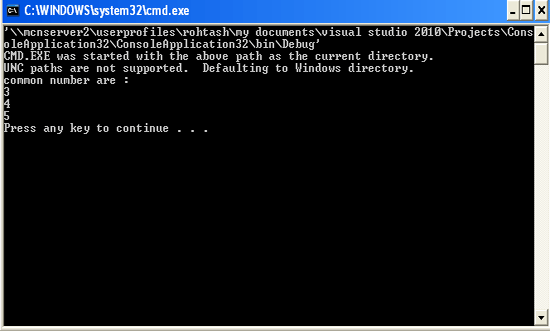Intersect Operator in LINQ using VB.NET
This article defines the basic use of Intersect operator in LinQ using VB.NET.
Introduction
Intersect acts as an AND operator value is selected only if it appears in both statements. Intersect returns the elements that two sequences have in common.
SQL Intersect
The below example defines the two table which has the common date.
SELECT Date FROM Table1
INTERSECT
SELECT Date FROM Table2
LINQ Intersect
The below defines the num1 and num2 are an array of numbers or even objects. Here is an example of num1,num2.
Dim num1 As Integer() = {1, 2, 3, 4, 5, 6}
Dim num2 As Integer() = {3, 4, 5, 7, 8}
Using Intersect operator
Dim commonality As IEnumerable(Of Integer) = num1.Intersect(num2)
For Each i As Integer In commonality
Console.WriteLine(i)
Next
For example
Module Module1
Sub Main()
Dim num1 As Integer() = {1, 2, 3, 4, 5, 6}
Dim num2 As Integer() = {3, 4, 5,7,8}
Dim commonality As IEnumerable(Of Integer) = num1.Intersect(num2)
Console.WriteLine("common number are :")
For Each i As Integer In commonality
Console.WriteLine(i)
Next
End Sub
End Module
OUTPUT
